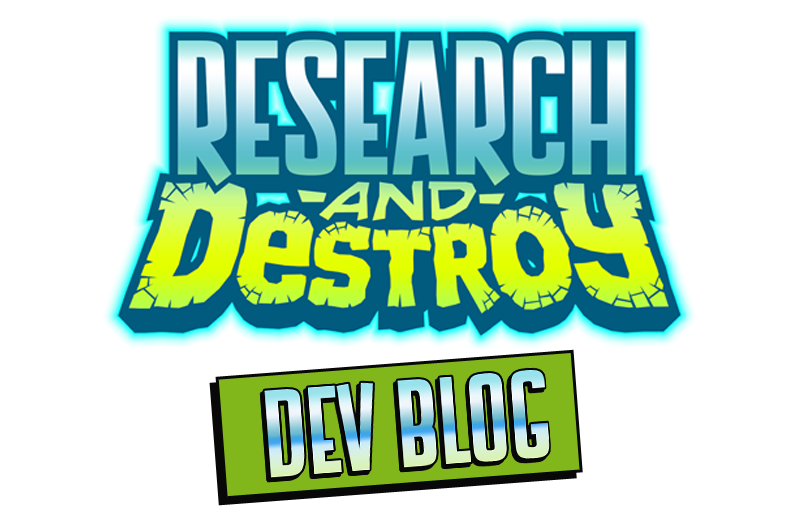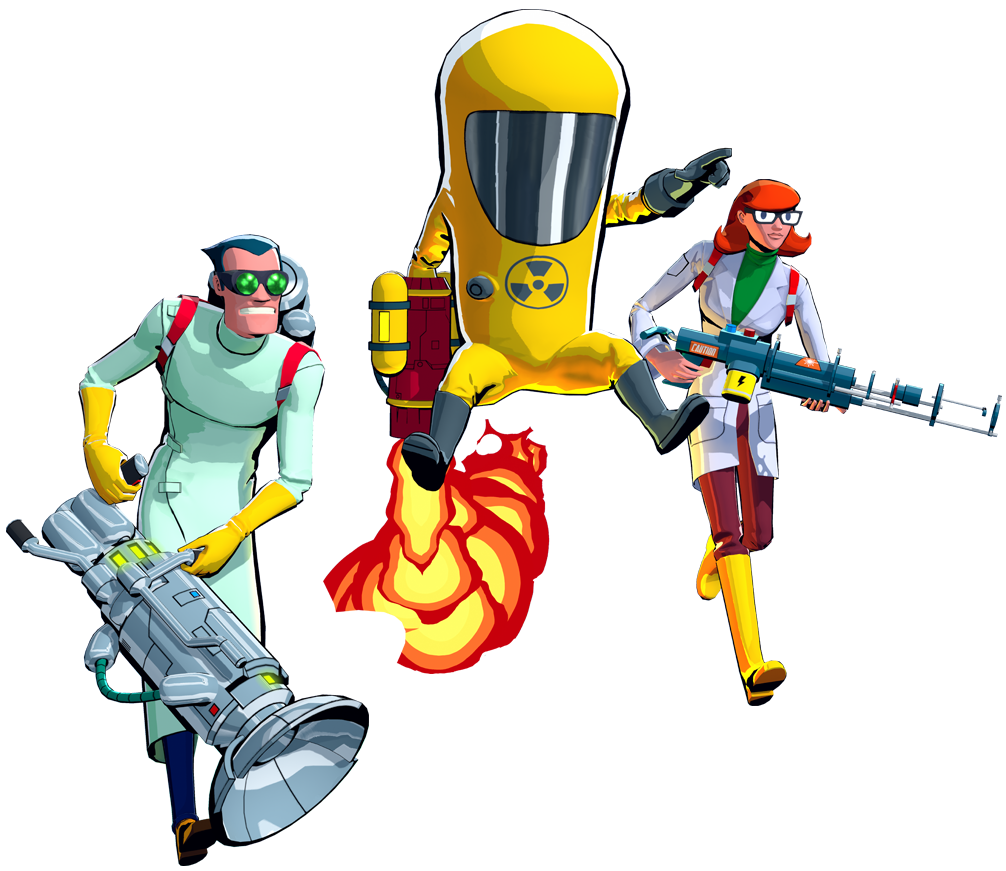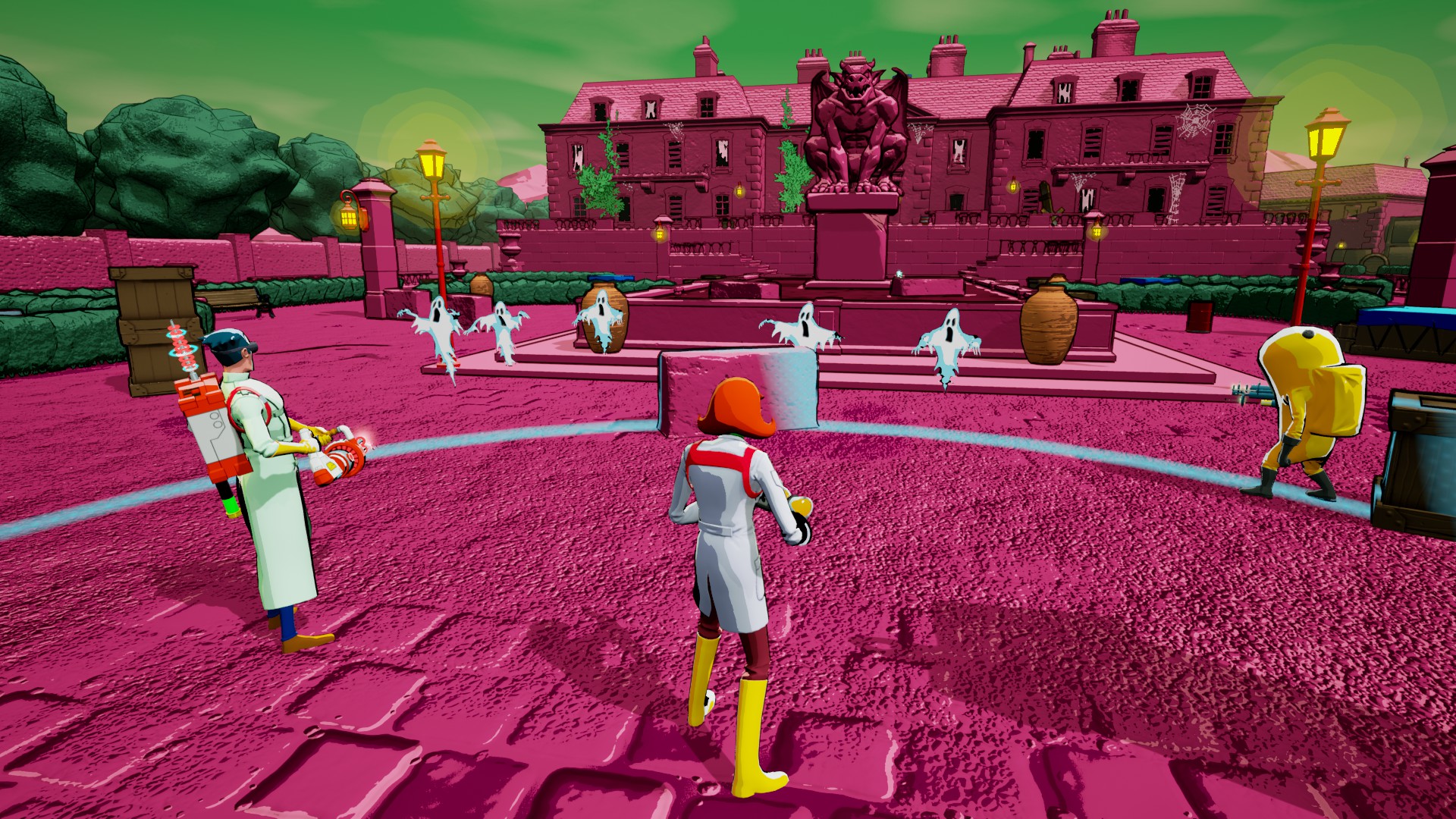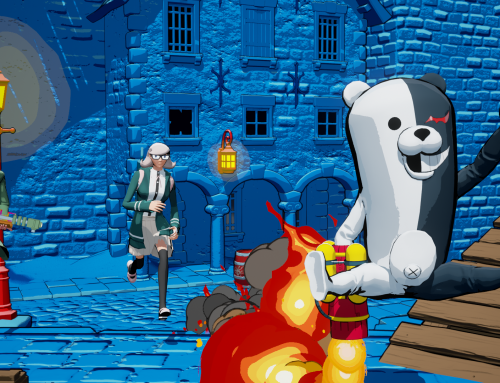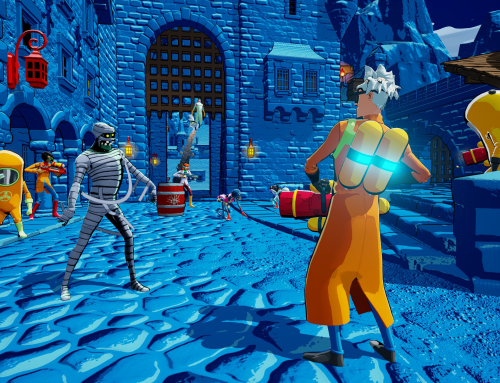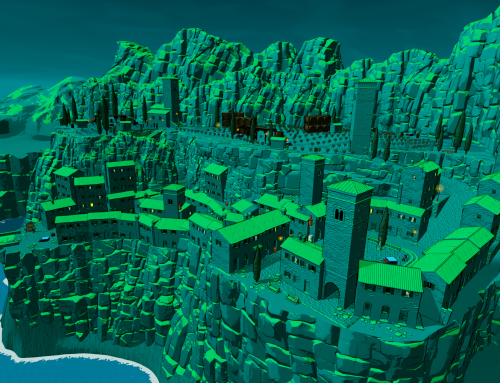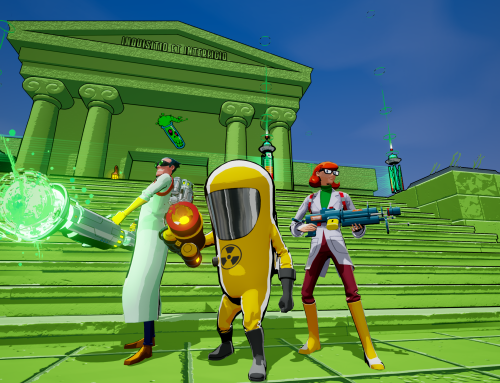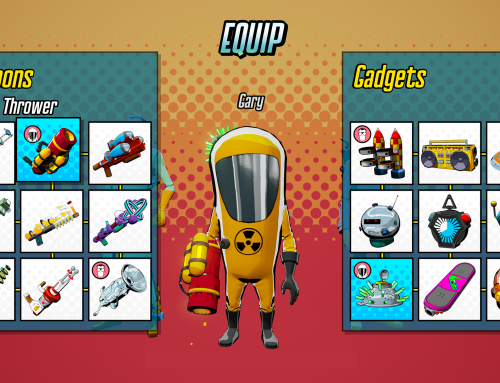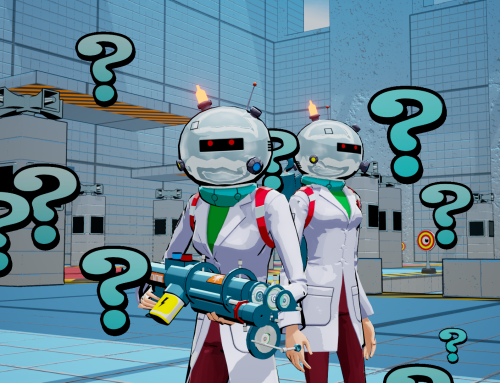In this blog post, we’ll talk about RESEARCH and DESTROY’s unique time management system and how we mixed Turn-Based Strategy and Third Person Shooter into something we like to call Turn-Based Action.
X-COM was a primary influence and starting point for our first prototype. However, RAD quickly evolved into something very different, something much closer to a Third Person Shooter.
Turn-Based Strategy games like X-COM usually have “Movement points” or “Action Points” which must be used in sequence. Typically you move each of your avatars a certain distance, then instruct them to attack or perform an action. Then you sit back and watch the show.
While prototyping RAD we discovered that this wouldn’t work with the main feature we were trying to add to the genre: cooperative multiplayer.
We ruled out having players take turns because it was boooooooring waiting for others to finish. Other players’ avatars would end up getting in your way causing you to end up a meter short of cover, walk into your line of fire, or just outright lose your intended cover to some fleet-footed jerk, thus leaving you sitting out in the open like a duck in the middle of a lake with a lightning rod taped to its head. During a thunderstorm. (Note to editor: please replace with a less sucky but equally ducky analogy).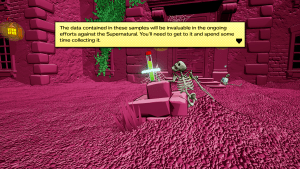
While funny at times, it was frustrating and made us wonder if we really needed to hew so closely to tactics game conventions. Why tell your avatars to move when you could just take control and move them yourself? Why tell them to shoot when you can just aim and pull the trigger yourself? Aren’t Movement points, Action points, and all that just abstractions for the amount of time a character has to do stuff? At this point we all simultaneously leapt out of our baths, cried “Eureka!” and ran off to rejigger the prototype so you’d directly control your characters as in a TPS, but with a strict time limit. Thus was born the now extremely popular* Turn-Based Action Game genre.
(*depending on when and in which timeline you are reading this).
Each avatar–Super Scientists in RAD–has 8 seconds or “Action Time” per turn to do whatever you want. Action Time is only spent when a Super Scientist actually does something, like running, shooting, or researching. Standing and looking around doesn’t cost any Action Time. The moment you let go of your gamepad, the game is frozen and you can think about what to do next. At any point you can also switch to a free-flying camera or the Satellite Camera view for a good look at your surroundings, objectives and Supernatural enemies.
You can spend a Scientist’s Action Time exactly as you please. For example, you can have one Scientist shoot down some Ghosts for 3 seconds, run towards the objective, then shoot at the Zombies ahead. Or make a Scientist low on health flee from an incoming Werewolf for the whole 8 seconds. You can swap Scientists at any point they have Action Time remaining to change your strategy on the fly.
Despite playing like a Third Person Shooter, RAD still maintains plenty of its Turn-Based Strategy influences: you can take as much time as you like to plan your next move. The blue line across the ground indicates how far you can move given your remaining time.
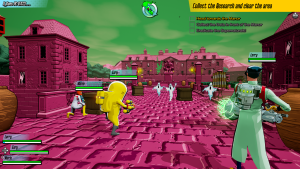 Once all three Scientists use up their 8 seconds each, the Super Scientist Turn ends, and the Supernatural Turn begins.
Once all three Scientists use up their 8 seconds each, the Super Scientist Turn ends, and the Supernatural Turn begins.
The Supernatural Turn
A common critique of Turn-Based Strategy games is that the enemy turn can take very long, as you are shown each enemy movement and attack in sequence. In RAD, we’ve compressed that time so the Supernatural Turn will be over in just a few seconds and then you’re back in the action. All Supernaturals move at the same time, then attack in a quick sequence. An on-screen indicator tracks the turn phases, but trust us, it’ll be over before you know it.
Mission Objectives
After the Supernatural Turn ends, you’re back in control to complete your mission objectives These include removing a Supernatural scourge from the region, deploying scientific apparatus, closing Supernatural portals or merely just surviving in this hostile new world.
You’ll have to manage your most important resource—time—on the fly. How much time should I devote to offense or defense? How much for objectives? Should I sacrifice my time to move to cover or grab that Health pickup? You can play gung ho or use one of your Scientists as a tank if you like, but playing tactically is your best chance at surviving to do science another day. If one of your Scientists goes down, that’s OK; a surviving Scientist can revive them–six hands are always better than two (or four).
Take advantage not only of the exotic weaponry and useful gadgets you develop, but also the environment. There’s lightweight cover, damage bonuses for attacking from higher ground, as well as plenty of explosives, electricals, enemy-position-exposing flickery lights, and good ol’ red barrels just asking to be blown up.
Through repeated play, experimentation and actual in-game research (more about that later!) there’s plenty to discover and lots of interplay between game systems, Supernatural behavior and emergent synergies between weapons and gadgets.
If you’re a fan of either Turn-Based Strategy games or Third Person Action games or are looking to try a new genre altogether, give RESEARCH and DESTROY’s Turn-Based Action a shot!

